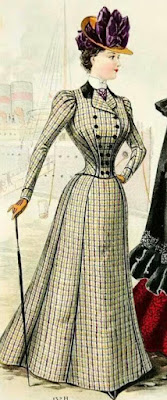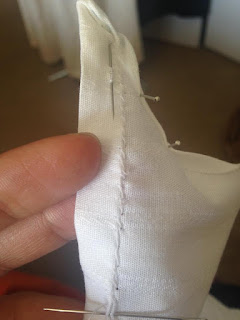Together As We Climb: The Challenges of The Black Suffragists
Back in March, before the nation was put on lockdown due to the Coronavirus Pandemic, I had the opportunity to participate in a living history event, called "Women & The Vote" at the First State Heritage Park in Dover, Delaware.
As we commemorate the 100th anniversary of the ratification of the 19th Amendment which allowed women to take part in the voting system, in addition to celebrating the biographies of famous American suffragists who pushed for equal voting rights.....let's hone in on that for a moment, because I'm about to tell you the other side of this important part of history. The stories of other suffragists who were not acknowledged for their contributions and were excluded purposely, all because of the color of their skin: the challenges of the Black Suffragists.
 |
| The Women's National Baptist Convent was one of the many black suffragist groups that petitioned for voting rights |
Along with groups such as The National American Women's Suffrage Association and The Women's Christian Temperance Union, black suffragists had their own groups too like, The National Women's Baptist Convent and The Headquarters for Colored Women Voters. This was mostly because they were excluded from joining the movement and barred from the conventions and rallies. But that didn't stop them from pushing for the same goal.
Between the later half of the 19th and early 20th centuries, black women also played an imperative role for women's voting rights. They participated in political meetings, organized societies as well as hosting their own conventions in their local churches. They also petitioned through their local newspapers, universities, and throughout their community. (The larger the platform the more support they would receive).
According to the NPS (National Park Service), black suffragists had a hard time getting their message across. This was mostly because they were continuously being overlooked by black men and discriminated against by white suffragists. The infamous Susan B. Anthony herself quoted during one of her speeches, "I would rather cut off my right arm than to give the vote to a Negro and not the woman." I also want to make note here that the NAWSA were also against the 15th Amendment that permitted black men to vote (a legal right in which Frederick Douglass and many abolitionists fought very hard to preserve since Reconstruction.)
As a result of being excluded from participating in conventions organized by the NAWSA and other organizations such as the WCTU (Women's Christian Temperance Union), black suffragists were forced to march separately. Ironically though they were stuck in a tug of war between black men and white suffragists; one group wanting full support in fighting racial discrimination, while another group wanted full support in helping to dissolve the 2nd class / subservient status of women in US society.
Strange isn't it? To be undermined and excluded, and yet their support was needed to benefit of both platforms (that they were fighting for in the first place.)
Overall, black suffragists predominantly focused on civil liberties and voting rights. They did not stop fighting. When the 19th Amendment was finally ratified in 1920 which extended the right to vote to women, there were still some challenges. Federal and state laws were passed to discriminate and limited the freedoms of POC Who Got The Right To Vote?. However by 1965 the Voting Rights Act was put in place which allowed all races to vote nationally.
But, that's not the end of the story. . . .
Even in the 21st century, voter suppression is still present. While The Voting Rights Act is still in place to allow everyone the liberty to cast their ballot, it has often faced criticism; who should be allowed to vote? The person(s) who immigrated from another country who hasn't yet become a US Citizen? The person(s) who was newly freed from incarceration? Person(s) who live in low income districts? The list goes on and on. But, there are plenty of people out there who like the suffragists (both black and white) are still advocating for all men and women of all races to exercise their civil and human rights.
Bonus photo:
My family and I visited the famous Johnson Victrola Museum down the street from the statehouse. Though it is a small museum, it's packed full of wonderful exhibits and working Victrolas you can listen to (we had a wonderful privilege of listening to Marian Anderson for the first time on an original record and talking machine!) I highly recommend visiting.
 |
"Follow the dog" for more information |
Here's some nifty information about the history of the Maryland Black Suffragists






.jpg)


Thank you for continuing to expand and enlighten us.
ReplyDelete